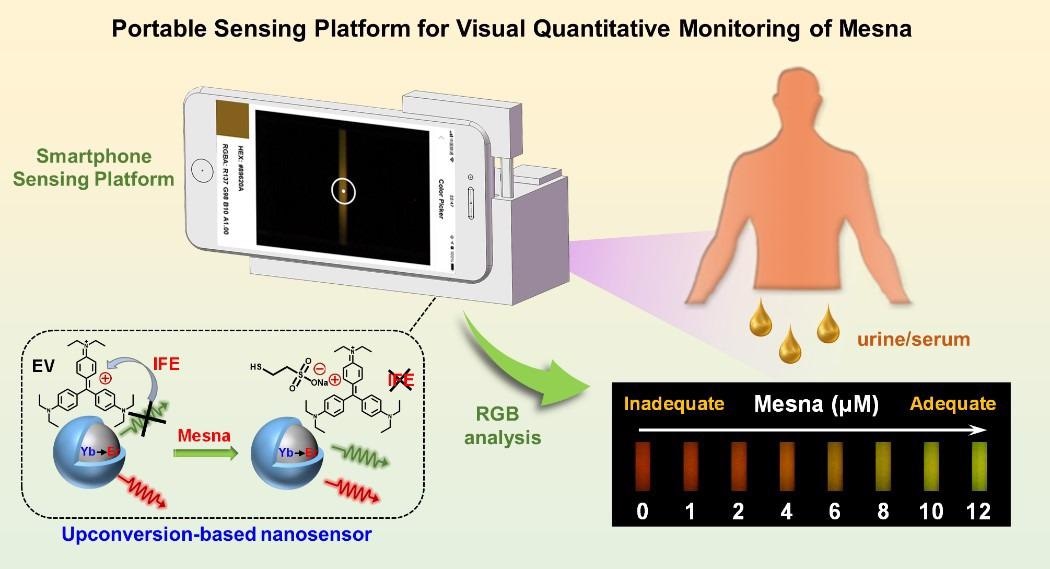Mesna, a key regional antidote for preserving chemotherapy patients’ urinary systems, must be monitored in real-time to guarantee that the therapeutic effect is achieved. The fluorescence technique is a useful tool for real-time detection since it provides a quick reaction and allows for visualization. Background interference, on the other hand, inhibits its use in biological sensing.
 Portable sensing platform for visual quantitative monitoring of mesna. Image Credit: Bin Hu
Portable sensing platform for visual quantitative monitoring of mesna. Image Credit: Bin Hu
To address this issue, a research group led by Professor Changlong Jiang of the Chinese Academy of Sciences’ (CAS) Hefei Institutes of Physical Science (HFIPS) recently suggested a new method for visual identification of mesna. The journal Analytical Chemistry published the findings.
The scientists used a newly constructed portable sensing device with an upconversion-based nanosensor to visually assess quantitative mesna in real-time circumstances.
Upconversion nanoparticles (UCNPs) and ethyl violet (EV) were used to make the nanosensor, with the UCNPs serving as donors and the EV serving as a quencher.
The addition of mesna resulted in changes in fluorescence and colorimetric chromaticity, allowing the nanosensor to perform dual-readout functions. The backdrop interference of biological samples was minimized and the detection sensitivity was successfully improved thanks to the near infrared ray induced upconversion luminescence. The nanosensor’s low limit of detection (LOD) for fluorescence and colorimetric signals was 26 and 48 nM, correspondingly.
In particular, a highly suitable portable sensing platform with a LOD of 56 nM was devised for easy detection of mesna.
The nano-sensor has strong selectivity and anti-interference capabilities, as well as good sample detection consistency.
The platform could be used to create a point-of-care testing application that would allow for real-time monitoring of mesna levels to help with dose modifications and treatment efficacy. It offers a simple and effective clinical drug monitoring technique, as well as prospective application possibilities.
The National Natural Science Foundation of China, China’s National Key Research and Development Program and Key Research, and Anhui Province’s Development Program all contributed to this study.
Journal Reference:
Hu, B., et al. (2022) A Portable Sensing Platform Using an Upconversion-Based Nanosensor for Visual Quantitative Monitoring of Mesna. Analytical Chemistry. doi.org/10.1021/acs.analchem.2c00380.